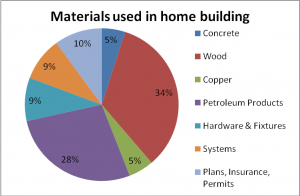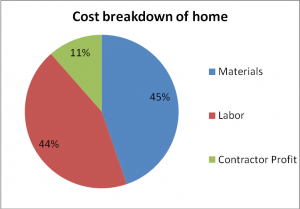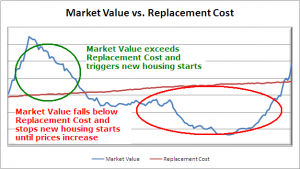 For most people, it is difficult to read through a financial newspaper or watch late night television without seeing repeated (possibly obnoxious) exhortations to invest in commodities such as gold or silver. The logic of these advertisements is frequently sound, since it is certainly true that government irresponsibility is leading toward a currency collapse and massive inflation. What frequently gets left out of the analysis is the other options available for investment that offer far greater prospects for return than gold or silver.
For most people, it is difficult to read through a financial newspaper or watch late night television without seeing repeated (possibly obnoxious) exhortations to invest in commodities such as gold or silver. The logic of these advertisements is frequently sound, since it is certainly true that government irresponsibility is leading toward a currency collapse and massive inflation. What frequently gets left out of the analysis is the other options available for investment that offer far greater prospects for return than gold or silver.
At the Financial Freedom Report, we are in absolute agreement over the prospect for commodity price inflation in the future. We are in absolute agreement over the massive deficits, crushing debt, and lax monetary policy of the government being a harbinger of runaway inflation over the coming decades. We are also in agreement over the dimming long-term prospects for the stock market, since there does not appear to be a new pool of investment capital to propel the stock market into an upward spiral like the one experienced over the last 25 years.
The strategy that we advocate at the financial freedom report is to use the attributes of rental real estate to invest in the commodities used for home construction. By following this strategy, we gain ownership of valuable commodities such as wood, concrete, petroleum products, and other building materials with the advantage of leverage from the bank and tax advantages from the government. We affectionately refer to this phenomenon as ‘packaged commodity’ investing because the commodity products are packaged into a residential home instead of sitting in a warehouse. The culmination of this strategy lies in the fact that commodities packaged into real estate investments can be rented to tenants. As an investor, this allows you to purchase commodity products while outsourcing the interest payments to a tenant and hedge against inflation with fixed rate debt, while delaying the payment of taxes through a section 1031 exchange.
*Theoretical example created through www.building-cost.net
The way that this strategy ultimately plays out is that the packaged commodities produce rental income through your property while inflation pushes up the cost of materials and the cost of labor. Over time, these increases in construction costs will generate a ‘rising tide’ that drives up market values. The cost of construction for new homes is split between materials and labor roughly even, with a contractor profit margin right around eleven percent of the construction cost. As the cost of materials and the cost of labor rises, it is likely to drive increases in replacement cost since the contractors do not have the ability to absorb large cost increases into their profit margins over an extended period of time. In practice, this will result in cost increases being passed along to the consumer in the form of higher prices.
Furthermore, it is important to consider the fact that many people need to be paid from the contractor profit margin on new construction. This makes home building an inherently volatile industry, since profit margins can expand or contract very dramatically, depending on the market cycle. Because of this, we advocate a strategy of purchasing attractive rental properties from somebody else instead of moving into the homebuilding business ourselves. This strategy allows us to ‘outsource’ the risks of new construction and focus on finding attractive deals.
*Theoretical example created through www.building-cost.net
An example of how this dynamic plays out is illustrated in the theoretical graph comparing market values against replacement costs. In an environment where the market value exceeds the replacement cost for new construction, it will trigger new housing starts by builders that recognize the opportunity for profits in excess of normal market conditions. In the case of a speculative bubble like the one that recently collapsed, huge amounts of resources pour into the home building industry to pursue the large profits. As this shift continues, the market will eventually become over-built with inventory, resulting in downward pricing pressure as bulders attempt to sell off their inventory at discounted prices.
Once the market value falls below the replacement cost in a given market, it will create a sharp decrease in new housing starts. The reason for this phenomenon is because people will be able to purchase existing homes for much less than the cost of construction from individuals that need to sell or from banks that are attempting to liquidate foreclosures. During this time, builders will find themselves in a terrible financial bind since the market prices will not be high enough to profitably build new houses. In many cases, bulders will have to operate at a loss for an extended period of time while they build out on permits and lots that have already been purchased in an attempt to recourp some of the costs. Over time, if the market values inflate back above the replacement cost, it will trigger another wave of building.
*Theoretical example of market prices and replacement costs
As this boom-bust cycle plays out, astute investors will have tremendous opportunities to profit. The most pronounced of these opportunities is to buy when prices are depressed and sell when prices are inflated. On the surface, this sounds very simple to do but it is an extremely difficult strategy to execute, because it requires prospective investors to move contrary to the prevailing market forces. During speculative booms or value rallies, the pressure on everybody is to buy and buy fast. When values are going up, up, up, there is no shortage of people who are willing to pay silly prices on the belief that they can always sell for a profit. Conversely, when values are depressed it can be very difficult to get the necessary investment capital for financing purchases. There will be more sellers than can possibly be imagined, but buyers will be extremely scarce.
At The Financial Freedom Report, we advocate a strategy of counter-cyclical buying for long term cash flow and appreciation. We prefer to target properties at prices below the replacement cost that generate attractive levels of cash flow. This produces a two-headed benefit of residual cash flows from rental income that can be used to pay for the mortgage, and a naturally low purchase price that is likely to become very attractive when market values eventually regress back toward the replacement cost. The key to this strategy lies in being able to ‘wait out’ the market gyrations with strong cash flow. By avoiding large amounts of negative cash flow, investors will remain solvent so that when inflation pushes up the replacement cost for their property and market values regress back to equilibrium, creating attractive gains in value.
It is unfortunate to think about the way in which the government has created speculative bubbles and inflation. We would all prefer to live with a responsible government, but that does not appear to be a realistic possibility at any point in the near or distant future. Because of this, prudent investors should position themselves to take advantage of government irresponsibility. The best way to accomplish this goal is by capturing attractive purchase prices from deflated bubbles, and by riding the wave of inflation as the cost of materials and the cost of labor push up the replacement costs for properties. By engaging in this strategy for wealth creation, it will place astute investors in control of real assets that produce real value for real people. Over time, this will allow you to side-step market manipulations and speculative bubbles while providing for the needs of yourself and the people you care about.
The Solomon Success Show




